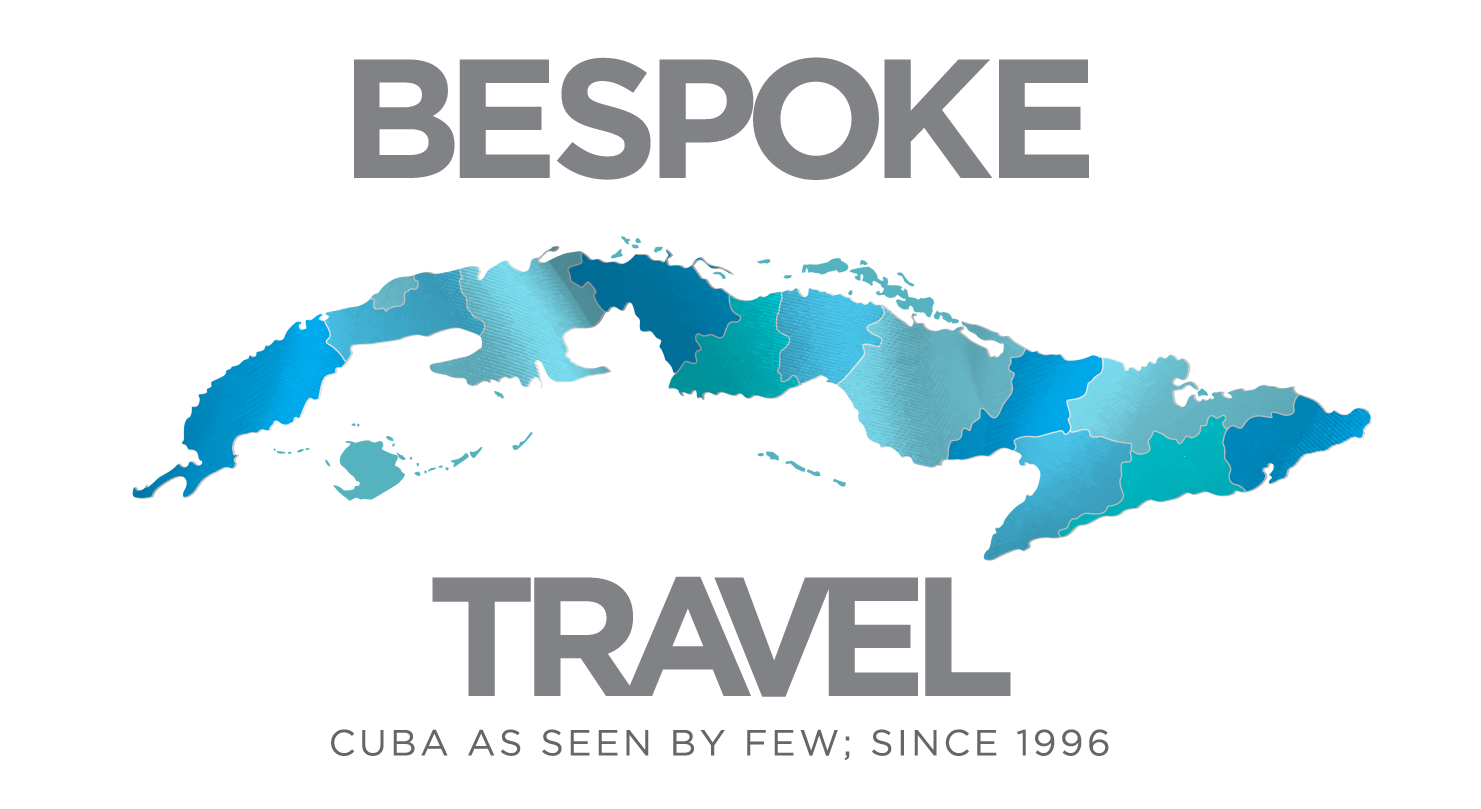Cuba Explorer
14 Days / 13 Nights
Santiago de Cuba was the fifth village founded by the Spanish in 1515. The city was plundered by French forces in 1553, by English forces in 1603 and more than 50 years later the English raided again. The city had a huge influx of French and British immigrants in the late 18th and early 19th centuries. In 1809, after Napoleon Bonaparte’s forces invaded Spain, French citizens were ordered out of Cuba. Most went to the United States, and thousands settled in New Orleans. Near the end of the century, during the Spanish–American War, Santiago was the site of the major defeat of Spanish troops in July of 1898. On January 1, 1959, Fidel Castro proclaimed the victory of the Cuban Revolution from a balcony on Santiago de Cuba’s city hall. Today the city’s eclectic cultural mix, rich with Spanish and African Caribbean spirit, make it one of Cuba’s most eclectic provinces. Its rum (Santiago de Cuba was the home of Bacardi Rum) made from sugarcane and aged in oak barrels is the best of all the rum produced in Cuba.
Depart Miami in the mornig and arrive Santiago de Cuba 90 minutes later. Pick up at airport by your driver and your Journey Leader. Next, check into your accommodations. Then we will have lunch at St. Pauli Paladar (a “paladar” is a restaurant not owned by the communist Cuban government). Following we will visit the Carnaval (Carnival) Museum. Inaugurated in 1983, the Carnaval Museum shows the popular celebration of the carnivals in the city of Santiago de Cuba that take place every July and that are a tradition and a sign of identity of the inhabitants of this Cuban town. Then we will visit the Rum Museum and learn about the rum production process and the history that accompanies it in Santiago de Cuba. This evening we will dine at Primos Twice. Later, dancing, cigars, Cuban coffee and or a nightcap at a local nightclub.
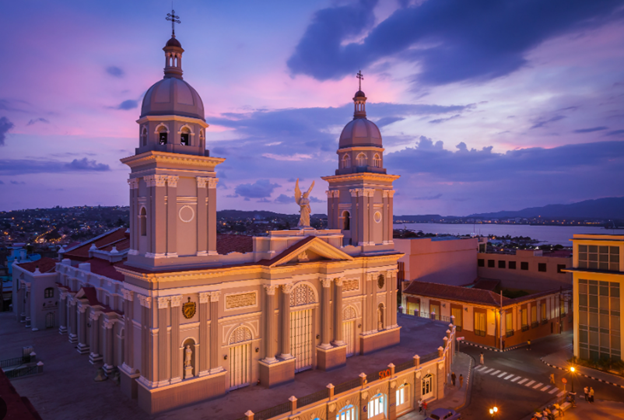
Day 2
Our Santiago de Cuba Expert, Yusnel, will take us to the Basilica of the Virgen de la Caridad del Cobre (Our Lady of charity). She miraculously appeared in 1612 and was declared Patron Saint of Cuba in 1916; La Caridad del Cobre is part of the soul of the Cuban people and is located in a natural mountainous environment of great beauty.
Following we will discover the incredible multi-level stone fortress known as Castle of San Pedro de la Roca del Morro. Designed in the early 1600s as a defense against raiding pirates, the Legendary fortress is among the most picturesque places in Santiago de Cuba. Following we will have lunch at a local paladar. Subsequently, we will visit the First Coffee Plantations in the Southeast of Cuba. It is a cultural landscape highlighting colonial coffee production from the 19th century. Upon our return, we will have dinner at Paladar Aurora followed by live Music at La Casa del ta Trova.

Day 3
Today we will take a brief ride to the city of Holguin, Cuba’s fourth largest city. In October 1492, when Christopher Columbus first landed in Cuba on Playa Guarda La Vaca (Guard the Cow beach) of today’s Holguin province, he described it as, “the most beautiful land human eyes had ever seen!” We will first visit Fidel Castro’s hometown. He was born on August 13, 1926 at the Finca Las Manacas. The sprawling ranch, bought by Fidel’s father Ángel in 1915, includes its own workers’ village (a cluster of small thatched huts for the mainly Haitian laborers), a cockfighting ring, butcher’s shop, post office, store and telegraph. The several large yellow wooden houses surrounded by lush cedars housed the Castro family. Tours here are thorough and very worthwhile. Then we will check into your accommodations. Afterwards, we will have dinner at a local paladar and enjoy some live music.

Day 4
This morning we will depart Holguin for Camaguey. Whereas Santiago de Cuba is the second largest city on the island and Holguin is the fourth, Camaguey is the 3rd. Here you will get a little closer to the ‘authentic’ Cuba, where the workings of the city were not orchestrated solely for tourist enjoyment. In July 2008, Camaguey’s old town was designated a UNESCO World Heritage Site because of its irregular, maze-like city planning, its prominent role in early Spanish colonization and agriculture, and its rich architecture showing. Enjoy a 2-hour walking tour of the main highlights of this beautiful city. Later we will dine at the very popular paladar, Melange. Followed by live music at Camaguey’s Casa de la Trova.

Day 5
After breakfast we will depart Camaguey for the city of Trinidad. While those with limited time or desire stick to Havana, those in the know take the time to swing by the colorful city of Trinidad, Cuba’s colonial masterpiece located between mountains and a beautiful ocean. A UNESCO city, she exudes a relaxed energy and seems as if stuck in the 17th Century. Havana may have the reputation for being Cuba’s delightfully colorful city, but charming Trinidad really steals the show. One of the most complete and best-preserved examples of colonial architecture, it’s cobbled streets, wooden balustrades, long balconies, horse-drawn carriages andits friendly and simple people, are all distinguishing features of this magical city. Trinidad is a real treasure, a wealth of riches, of urban gems and historical architecture. Upon our arrival we will embark on a tour of the town center led by Duviel, our Trinidad expert . We will meet him on Plaza Mayor, an open-air museum of Spanish Colonial architecture from where he will guide you through the historic plaza, its cobblestone streets, pastel-colored houses, wrought-iron grilles, and colonial-era edifices such as the Santísima Trinidad Cathedral and Convento de San Francisco. La Plaza is also home to the Municipal History Museum, El Museo Romantico, the Museum of Colonial Architecture; the Parroquial Mayor church; and the Museo Nacional de la Lucha contra Bandidos, with its famous bell tower. After your tour you’ll enjoy lunch at Bistro Trinidad. This beautiful place is quite a gem with one of the cutest terraces in Trinidad. Bistro Trinidad specializes in Cajun-Creole and seafood dishes. Afterwards we can visit one of the street markets where you can find a slew of hand-crafted items. Then we will visit the art galleries of some famouslocal artists. This evening we will have dinner at Museo 1514. The interior of the building is beautiful, with part of the house set out almost as a museum piece. Afterwards we will enjoy live music and dancing outside at La Casa de La Música Trinidad.
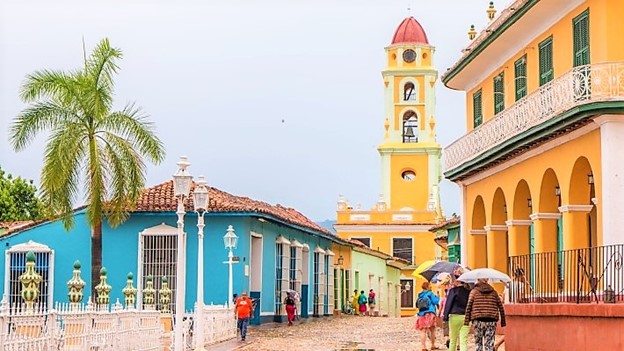
Day 6
After breakfast your guide Duviel will take you on a train ride to the Valle de los Ingenios (Sugar mill valley); a series of 3 valleys that were a center for sugar production from the late 18th century until the late 19th century. At the peak of the industry in Cuba there were over fifty sugar cane mills in operation in the three valleys, with over 30,000 slaves working in the mills and on the sugar cane plantations that surrounded them. Take in the scenery and learn about the slave trade in Cuba. Afterwards, we will have lunch at Los Conspiradores (“The Conspirators”). Lster, we will visit the studios of some well known local artists. Then we will visit La Taverna La Cancháchara and immerse yourself in a Cancháchara, a refreshing cocktail made with honey and “fire water.” Management will present you with a special welcome gift. For dinner we will visit paladar San Jose, one of our Trinidad favorites. Then, we will pay a visit to La Casa de la Trova where there’s always great live music.

Day 7
This morning we will take a leisurely 90-minute drive to Cienfuegos (the city of 100 fires). Cienfuegos is a lovely, yet extremely underrated destination in Cuba. Though the vast majority of Cuba is known for the Spanish colonial style architecture, Cienfuegos is truly different, as it has a more French architectural style. It’s so unique that in 2005, the historical center was added to the list of UNESCO World Heritage Sites. Upon arrival we will have lunch at Camila’s Paladar where you will enjoy good food and the waterfront views across the bay. Later our local Cienfuegos expert, Beatriz, will take you on a walking tour of all the important historical and architectural sites in the city including stops at Parque Jose Marti, Boulevard, Benny More Statue and Cienfuegos’ beautiful Malecon and the historic Castillo de Jagua fortress. Subsequentky, we will have a special dinner at Casa El Patio Andalu. After dinner the owners, Ivet & Joel, will play some live flamenco music for us.

Day 8
This morning we will head to the southernmost end of Matanzas Province to visit the Bay of Pigs. We will visit Museo Giron, the Bay of Pigs Museum, then we will check out the town square followed by snorkeling or beach time. Later, we will have unch at El Butty paladar. Later we will depart for Havana.
Upon arrival in Havana we will check into your accommodations. Later we will enjoy a delcious gourmet dinner at Brasserie 255 followed by some live Cuban Music.
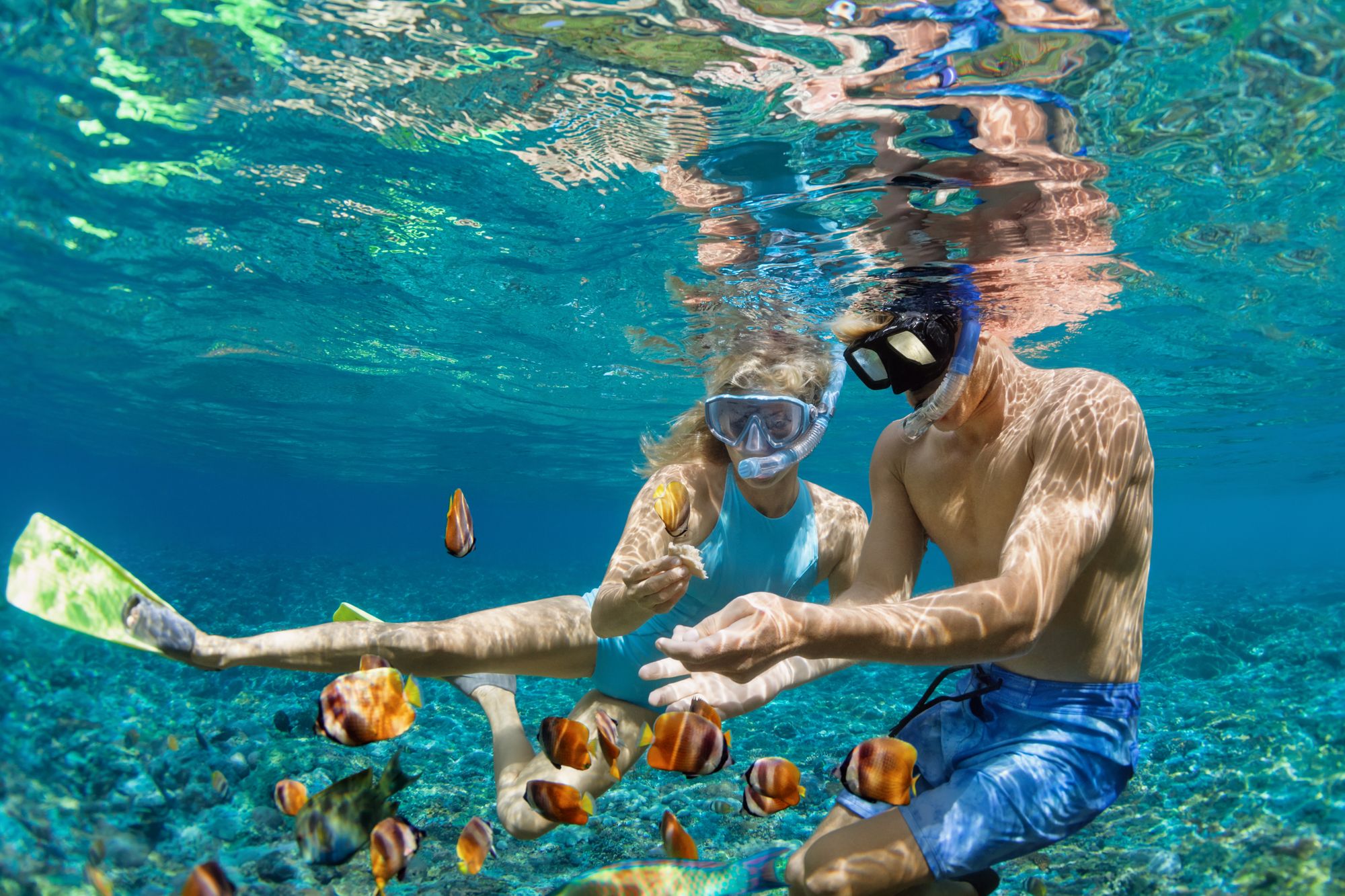
Day 9
This morning we will embark on a historical walking tour of La Habana Vieja (old Havana) with our La Habana expert, Alejandro. The tour will end at Cuba’s Capital building. Often compared to the US Capitol, Cuba’s is a meter higher, a meter wider, & a meter longer, as well as much richer in detail. Then we will have lunch at La Guarida paladar. La Guarida, one of La Habana’s oldest paladars, is where Jay Z, Beyonce, Rihanna, and President Obama and his family ate when they visited Cuba. Afterwards, we will visit El Morro Fort. Perched on a headland on the opposite side of the harbor from Old Havana, it can be seen from miles as it dominates the entrance to the harbor. Built-in 1589 in response to raids on the city, El Morro protected the entrance of the harbor with a chain strung out across the water, known as the boom defense. The fortress is part of the UNESCO Old Havana World Heritage Site, inscribed in 1982 for its historical importance in the European conquest of the New World and its unique mix of architecture. This evening we will dine at Antojos, one of the city’s hippest paladars. Following we will enjoy the infamous Tropicana Outdoor cabaret for a stunning performance of Cuban Music and dancing. Known as one of the hottest cabaret shows in the world, the Tropicana Nightclub show is a world-famous spectacle set in a lush, tropical open-air venue that bursts with colorful lights, glitter, and glam. Salsa-charged and sensual, it’s a must-do activity during any trip to La Habana Cuba.

Day 10
This morning enjoy a tour of the Museo Del Automovil (the Automobile Museum). Despite La Habana being the greatest free open air classic car show in the world, it is still worth checking out this little museum in La Habana Vieja. There are only around 30 vehicles on display and they are mainly in an unrestored state which is rare to see nowadays. Afterwards we will head to The Museo de Arte Cubano (The Museum of Cuban Art). We will meet up with an art professor who will lead you on a tour of this beautiful museum which exhibits Cuban art collections from the colonial times to contemporary generations. Then we will have lunch at Van Van paladar. Following, we will visit Finca Vigia, just outside of La Habana. It is the former colonial home of Ernest Hemingway. It’s where he wrote some of his most famous novels like: For Whom the Bell Tolls and The Old Man and the Sea. Explore the grounds witha private tour from one of the world’s leading Hemingway researchers. Afterwards we will visit bar El Floridita, Hemingway’s old watering hole for some of their world- famous daiquiris. This evening we will have dinner and experience live music at Yarini Habana, one of La Habana’s most popular paladars. Known for its fusion Cuban food and music, this restaurant is al fresco.

Day 11
Day trip to Viñales, a town in Western Cuba. Its main street is lined with colorful colonial-era wooden houses. Viñales serves as a gateway to the Sierra de los Organos mountains and the Viñales Valley which is a UNESCO site. The valley’s tall, steep-sided limestone hills, known as mogotes, draw rock climbers. You will visit a tobacco farm, a tobacco sorting center where only women are allowed to handle the delicate tobacco leaves, go horseback riding (optional), take a trip through a mysterious indian cave, and visit an organic farm where you will have lunch. Upon your return to La Habana, we will have dinner at Tierra, a paladar built out of shipping containers, their Latin American influenced menu is a delight to choose from. Then, we will go downstairs and enter La Fabrica de Arte Cubano. It is the best night time cultural proposal in La Habana. There is always something new to experience, theater, jazz, contemporary dance, concerts, DJ’s and art exhibitions. It was listed by Time Magazine as one of the top 100 places to visit in the world.

Day 12
For breakfast we will be joined by Marc Frank, author of the book, “Cuban Revelations: Behind the Scenes in La Habana.” Mark is based in Cuba and is a correspondent for The Financial Times and Reuters. He has won various awards including the Thomson Reuters Award. You can ask Marc anything about Cuba whether it is politics, history, religion or culture, he is considered a local. Subsequently, we will visit entrepreneur and winemaker, Orestes Estevez. His La Habana-based winery churns out unique concoctions made not just from Cuban grapes but also ingredients like tropical fruits (such as guava) and vegetables (like beets). Orestes keeps costs down by using condoms instead of more expensive equipment. A devote revolutionary, Orestes will candidly discuss with you the success and failures of Castro’s revolution. Following, we will have lunch at El Cocinero. This paladar became an instant hit when it opened. Located in an old vegetable oil factory, it attracts a mixed crowd of affluent Cubans, artists and diplomats. Then, at the Museo del Ron Havana Club (The Havana Club Rum Museum) you can experience a journey into Cuban roots. Explore the rum-making process, from freshly cut sugar cane to a surprising scale model factory; and learn how the distillery and aging warehouses worked. you can learn about the history and making process of this Cuban rum. There is a tasting room and bar at the end of the tour where you can try four different Cuban rums. Tonight, we will have dinner at Los Mercaderes, an excellent paladar in Old Havana. Afterwards, we will go to the rooftop of the Hotel Claxon and listen to some live Cuban Jazz.
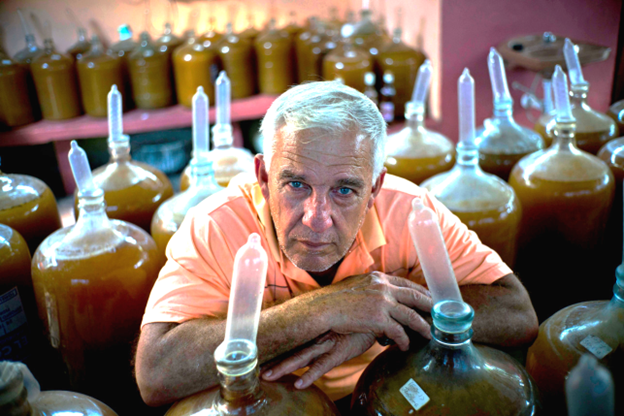
Day 13
Day Trip to Varadero. Varadero is the number one beach getaway in Cuba, and is famous worldwide as one of the world’s most beautiful beaches. If you’re looking for that perfect white-sand Caribbean beach you’ve seen on a postcard, you’re probably looking for Varadero. Subsequently, lunch will be had at Salsa Suarez, a local gourmet paladar. At around 5 PM we will head back to La Habana. Then, we will have dinner at El Atelier. Chef Niuris Higueras describes her paladar as, “an experimental culinary workshop.” The menu is eclectic and changes every day; from patoconfitado (candied duck) to Lomito de res con camarones y espuma de apio (sirloin steak with shrimp and celery mousse). Followed by Live music and dancing at Casa de La Música.

Day 14
Today we will visit the kaleidoscopic world of Fusterlandia, a sprawling, mosaic-covered labyrinth of streets and bungalows on the Western outskirts of Havana. Fuster had studied at Havana’s Art Instructor’s School in the mid-1960s, and continued his education traveling across Europe, where he saw masterpieces by Pablo Picasso, Constantin Brâncuși, and Antoni Gaudí. The experience stoked dreams of creating work of his own that would earn similar admiration, he told National Geographic in 2013. After returning to Cuba, Fuster purchased a small wooden home in Jamainatas and started his life’s work, using the walls and streets of his hometown as a canvas. Pretty soon he started using his neighbors’ homes as a canvas and eventually he created this community called Fusterlandia. Fusterlandia is still growing. On most days, Fuster himself can be found in his streetside studio, painting tiles or arranging bits of broken ceramic that will cover his next surface. Afterwards we will head to La Habana’s Jose Marti Airport for your return flight back to the U.S.

